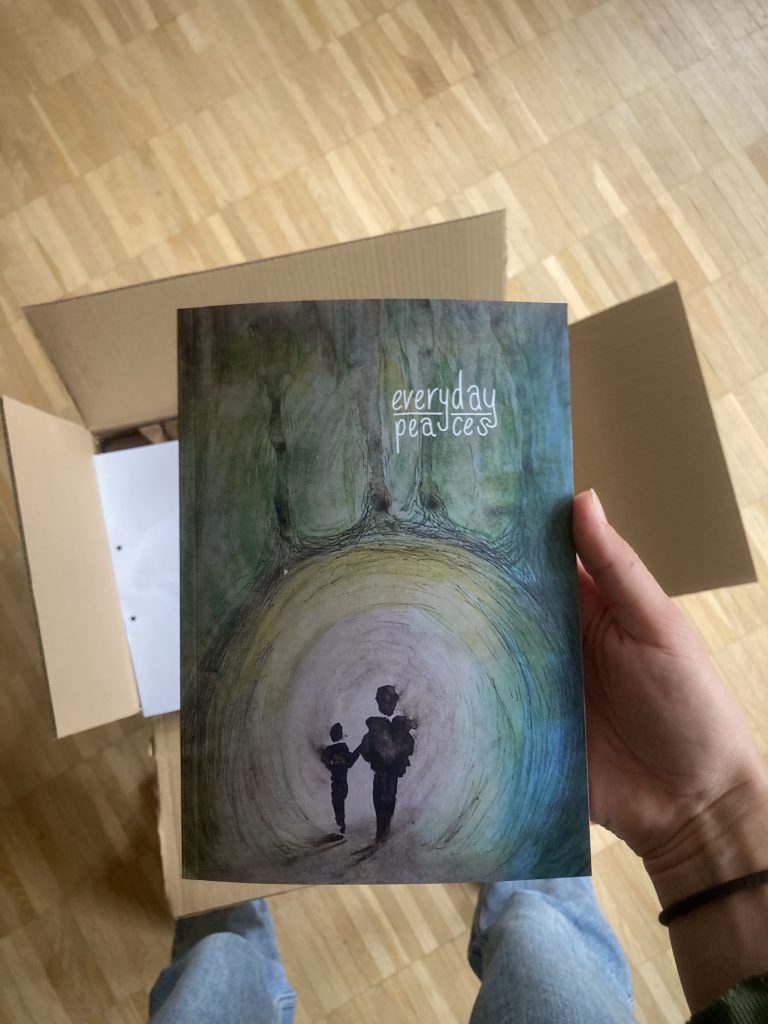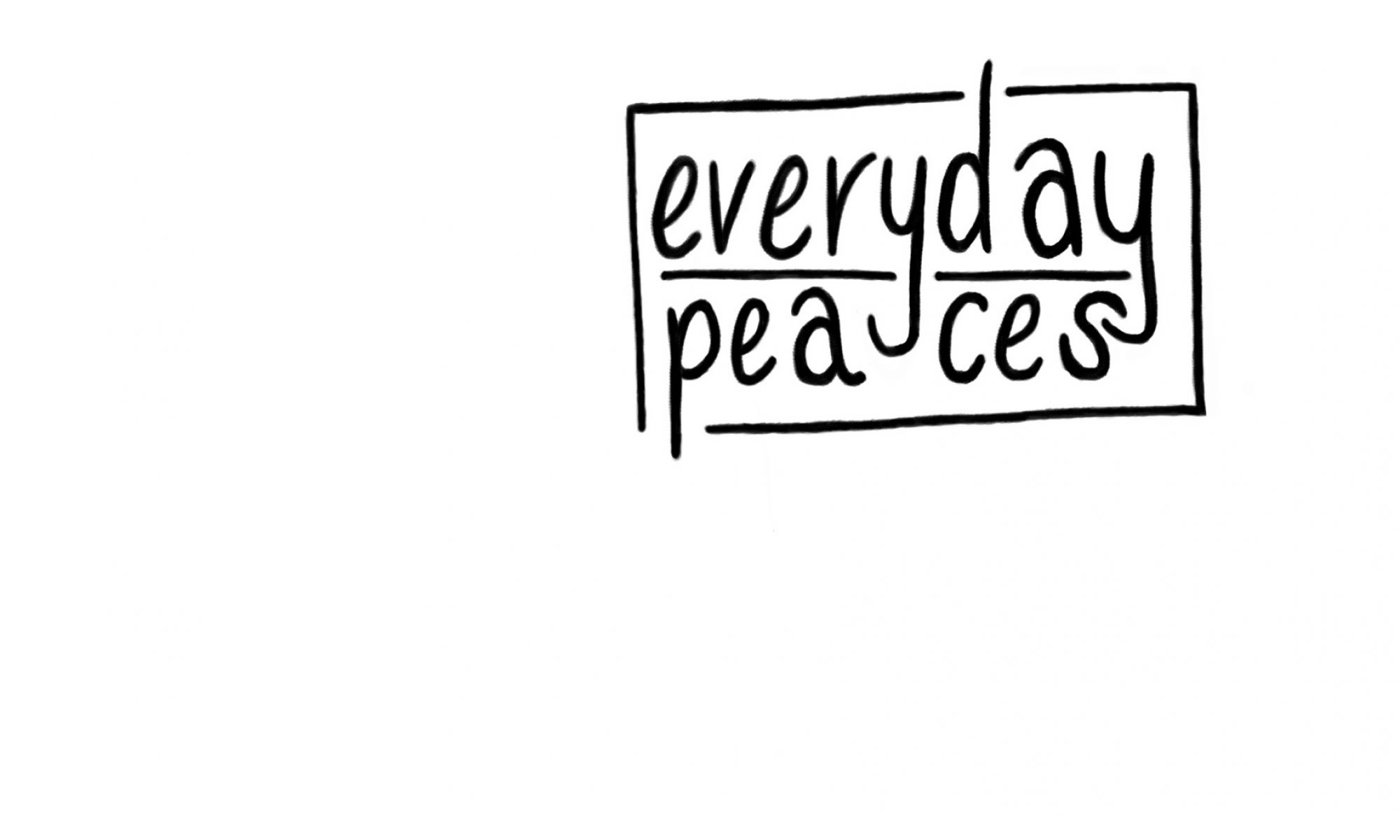The Everyday Peaces Book
I stopped publishing stories at the end of 2022. After four years, I wanted to use my time and energy for other projects. However, both my mother and I thought that it would be nice to have all the stories as a collection printed in a book, as a physical summary of this project. This book is now finally printed and can be read as a whole- contact me in case you are interested in one.
I am very thankful for everyone who helped me with it through the years. My friends, my family, acquaintances, those who encouraged me, told me stories, translated them for me, read them, and told me more.
I might not continue this project, but these stories record a selection of what is out there. I keep hearing and seeing such stories, and I continue to believe in the good in humans.

How this started- background:
The trigger point for this project to start was when a colleague from university showed us some news about events, that were taking place in autumn 2018 in Köthen and Chemnitz in Germany. When, after the the death of a person through tragic and unfortunate circumstances, refugees got harassed and scared and a massive wave of rumours, hate speeches and shocking stories went through the news. What shocked me, was not mainly the kind of people that were involved, but that the words used brought to light, how much hate and fear exists.
Once more, I wished to be able to do something. To change something, for that fear and hate won’t have that much power in future. The question was, what I could do. Support other projects, go to demonstrations, yes. But I wanted to do something myself, as individual, even though I do not know if someone alone can actually do much. And the one thing I have is my voice.
But I cannot tell others what is right and what is wrong. Because we all have a different idea of right and wrong and I consider it not a good method to tell people what they should and should not do. So I had the idea to write about other humans. And about the everyday good they have done or experienced.
What it means- why I am sharing these stories:
All of many humans on earth have a story worth to tell. Our own life consists of so many thoughts, emotions, events- and this exists in the mind of millions of lives. It is easy to forget when you see the numbers of people in an election, demonstration or catastrophe. It is easy to forget that behind every number is a person and a life story.
We all heard some big stories of famous people, „heroes“. But the small stories of everyday are not less important. Everybody knows these kind of stories, either they have heard one, experienced it by others or showed humanity, courage, kindness, empathy with someone else. These stories can move, inspire or at least give some hope and faith in humanity.
And this is my goal here, this is everything I can hope for. To read these stories and feel with the persons they belong to. That the reader listens to what drives or scares the story teller. We can learn and understand a lot through that. And I have this hope that with more understanding, our world will become more friendly and humane. These stories show elements that connect instead of divide us.
I am telling stories, because they have an unexpected power in changing peoples lives. Stories you heard as a little child, can grow with you and become a dream for the whole life. You never know where their message lands, but it can stay unexpected in someone’s mind, to inspire, give hope and energy, wake up, remind or distract.
Some Words on stories and positive journalism:
With the texts here, I am telling a story myself, a narrative. And it is one about the good sides of humans, in the hope that if people are aware this side exists, they can see and also create it more often. I look at compassion, understanding, empathy and support. This is not to say that this is the only side that exists of humans. But since in news reports the small events, the everyday wonders and the positive are drowning in between „newsworthy“ conflicts and catastrophes, I want us to see that this side exists as well.
This could be counted as an argument for positive journalism. The concept of “positive Journalism” (sometimes equalised with „Constructive Journalism“), which has been introduced only in recent years, aims at giving positive news a bigger share in the overall news coverage. It is a response to the dominance of negative news, like problems and disruptions in the system, which can lead to a distorted picture of reality (e.g. an overly negative one). This way of doing journalism can have discouraging effects: many and constant bad news can create a feeling of helplessness, because problems appear too big to be solved. This is to be challenged by positive journalists, who aim at complementing and expanding this mainstream, one-sided type of journalism. Using different perspectives in their work, they can provide a more diverse picture. Positive news which are outcome-oriented however can support people and motivate them to invest into society, even at times of crisis. Positive Journalism is not supposed to be propaganda or wrong-placed optimism that paints bad news in pretty colours, and traps like oversimplification are to be avoided. But it attempts an in total well-balanced news coverage. Critical reporting does not exclude looking at good results and positive processes.
There is no comment function because when telling stories, you should listen and not interrupt. Not everyone will agree and some might have a different opinion to some stories. But this is about listening. These are stories of others. If you want to tell your own, you can contact me directly.
